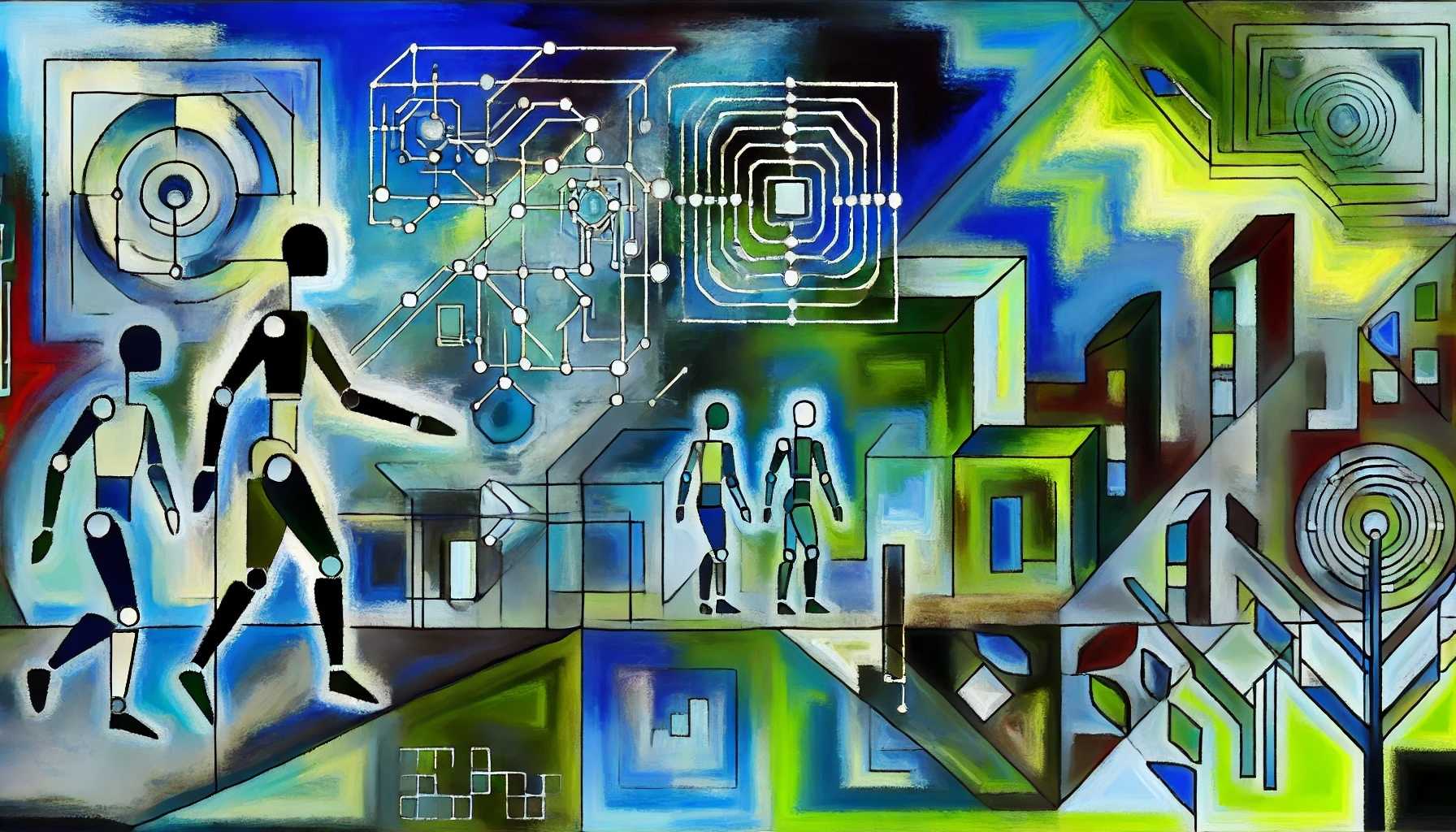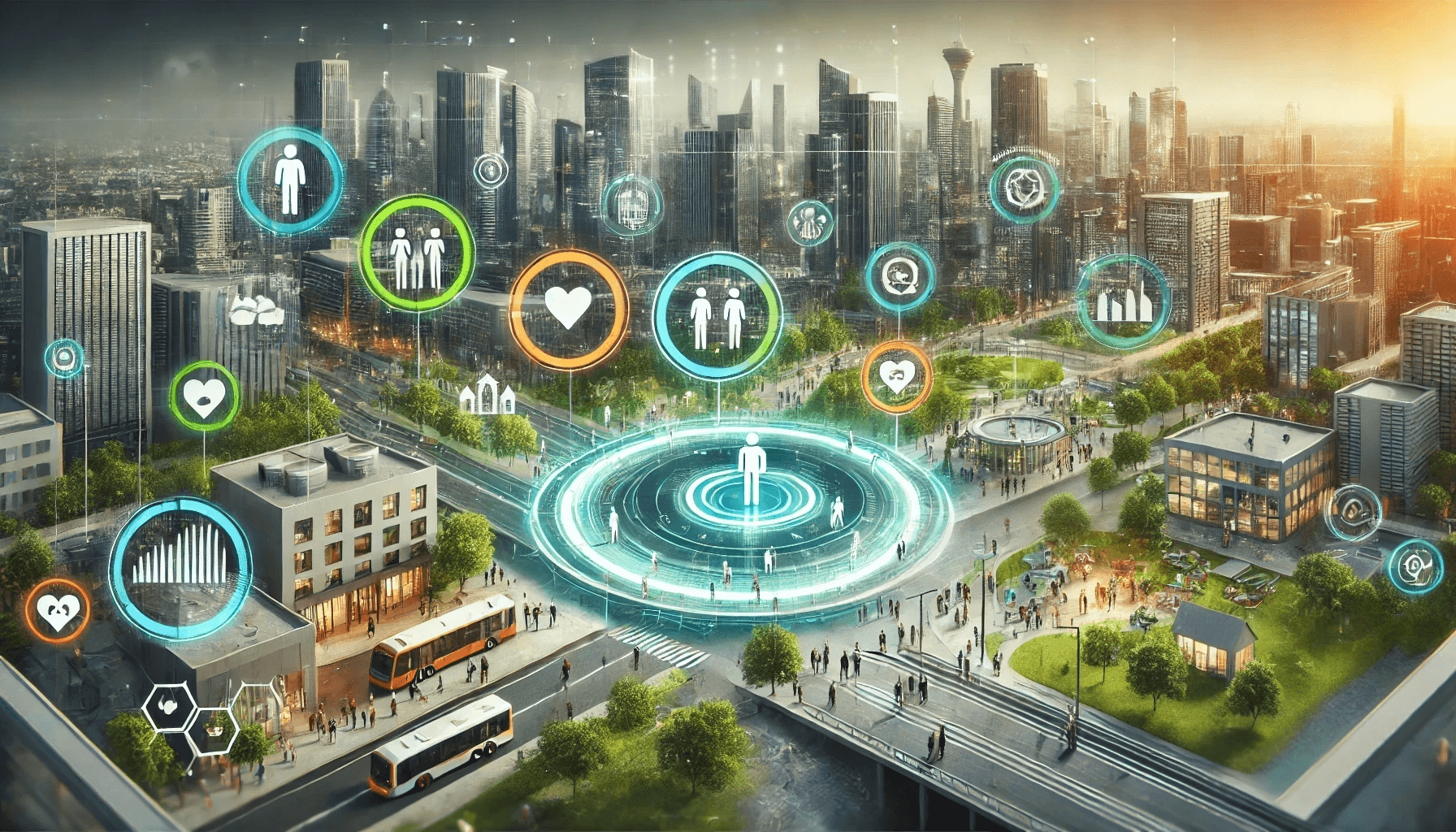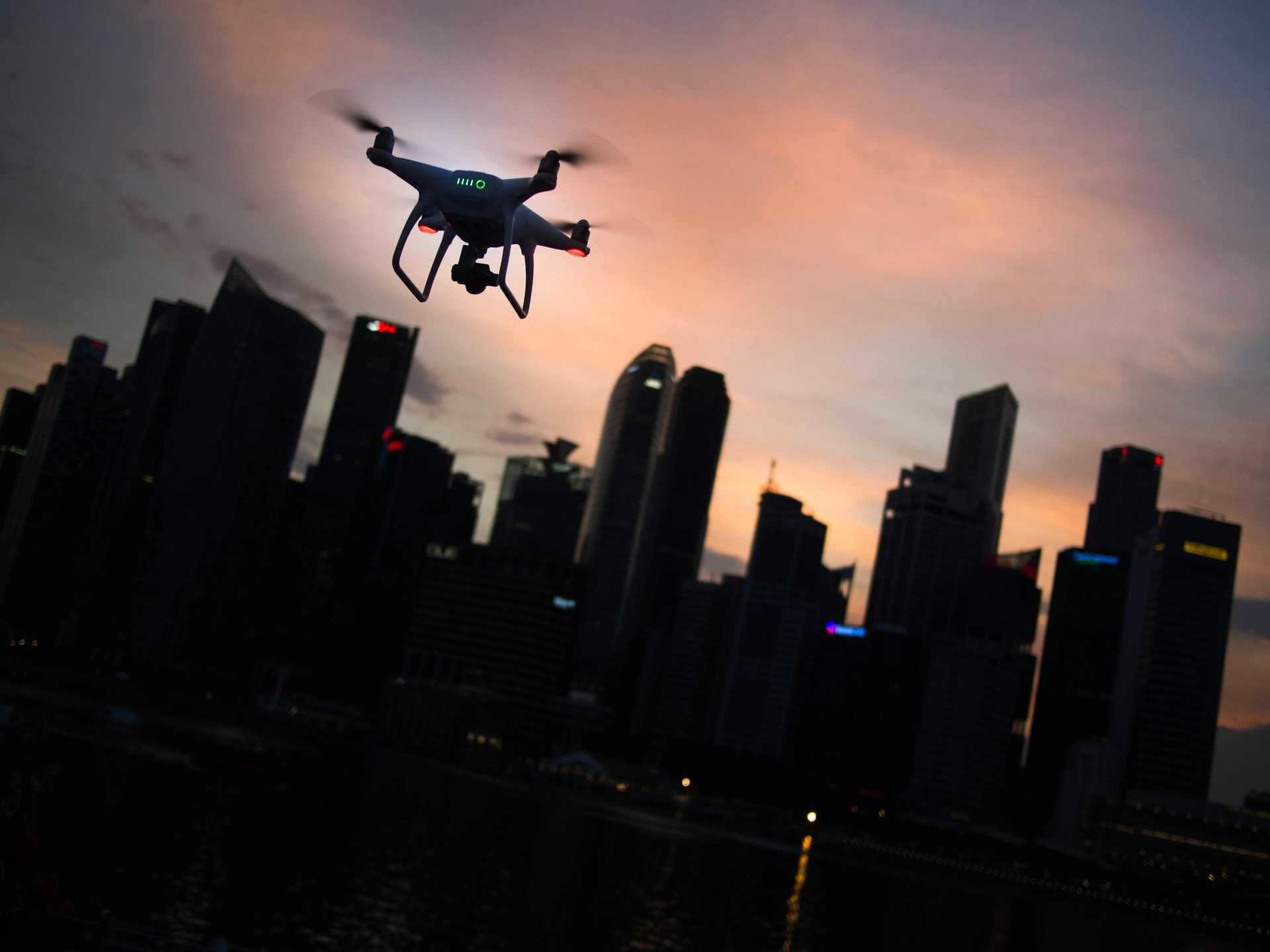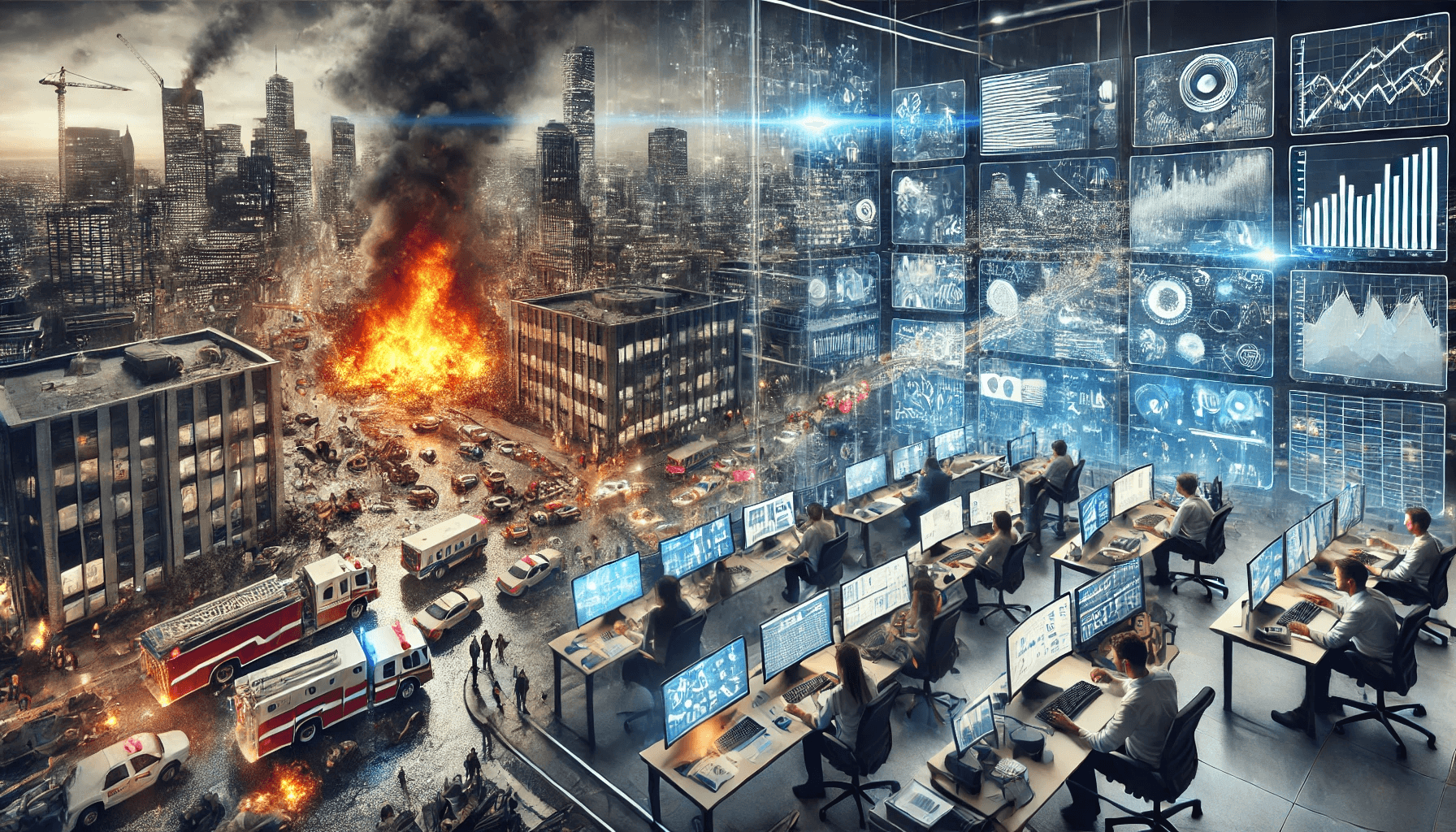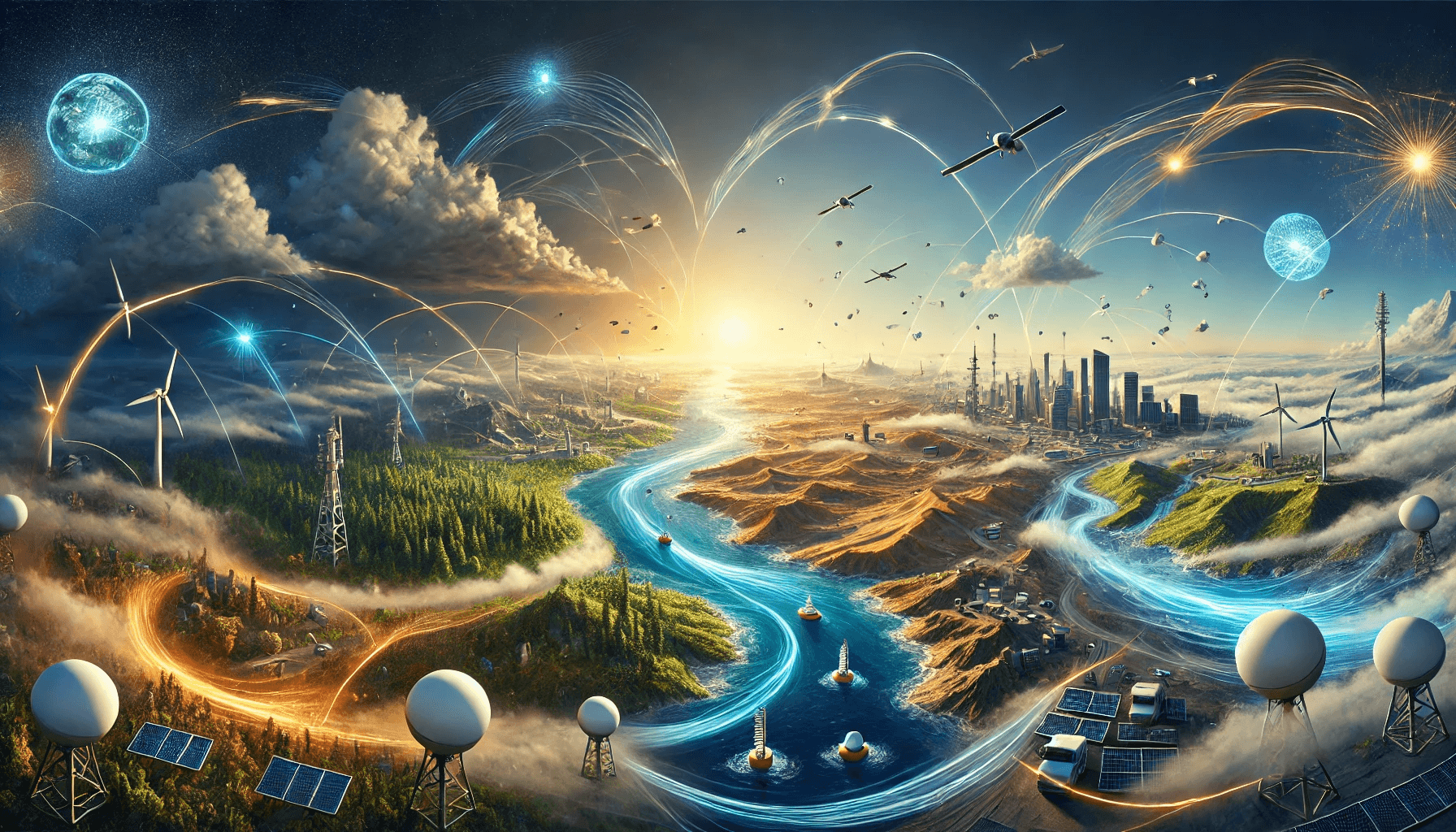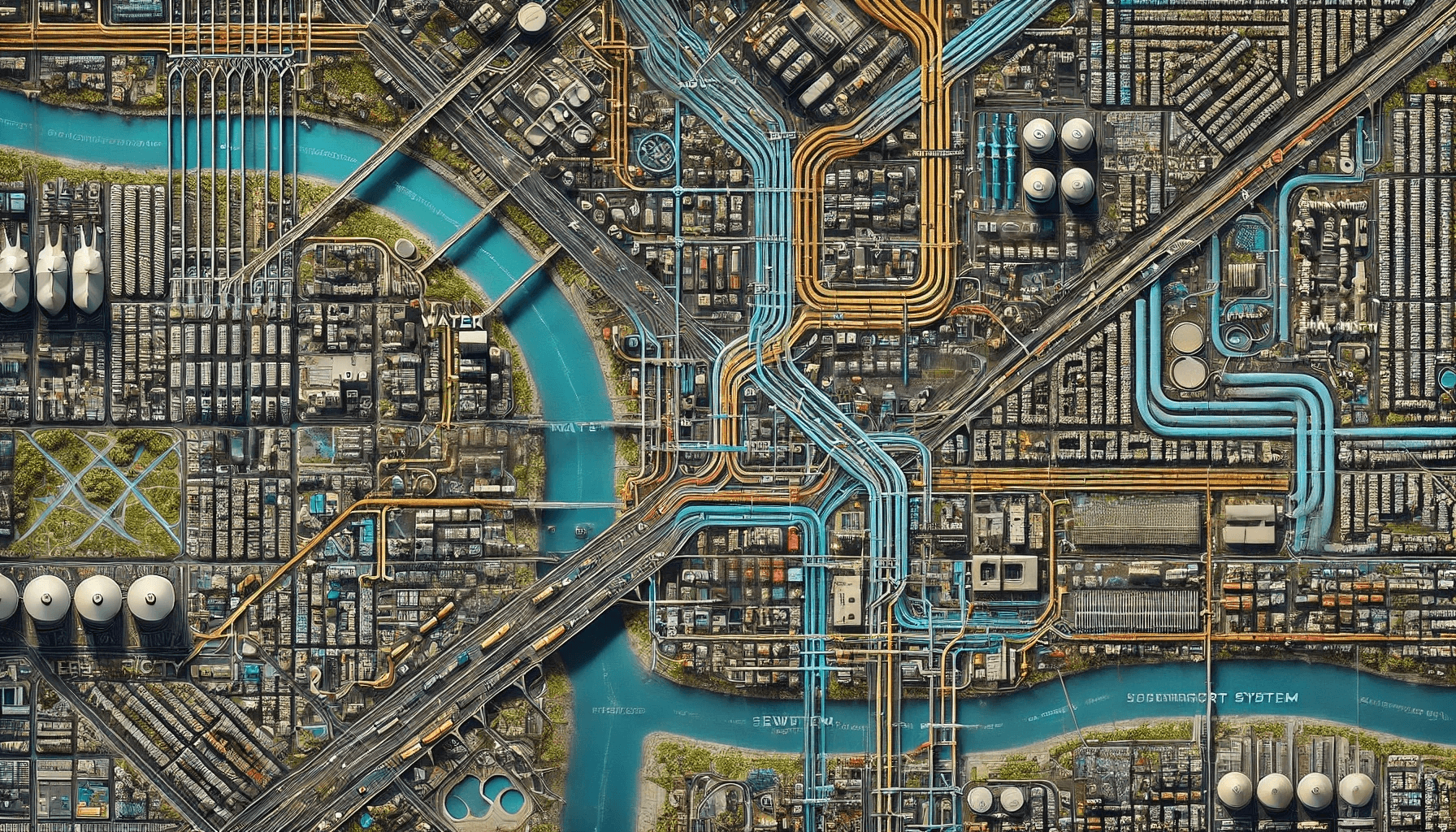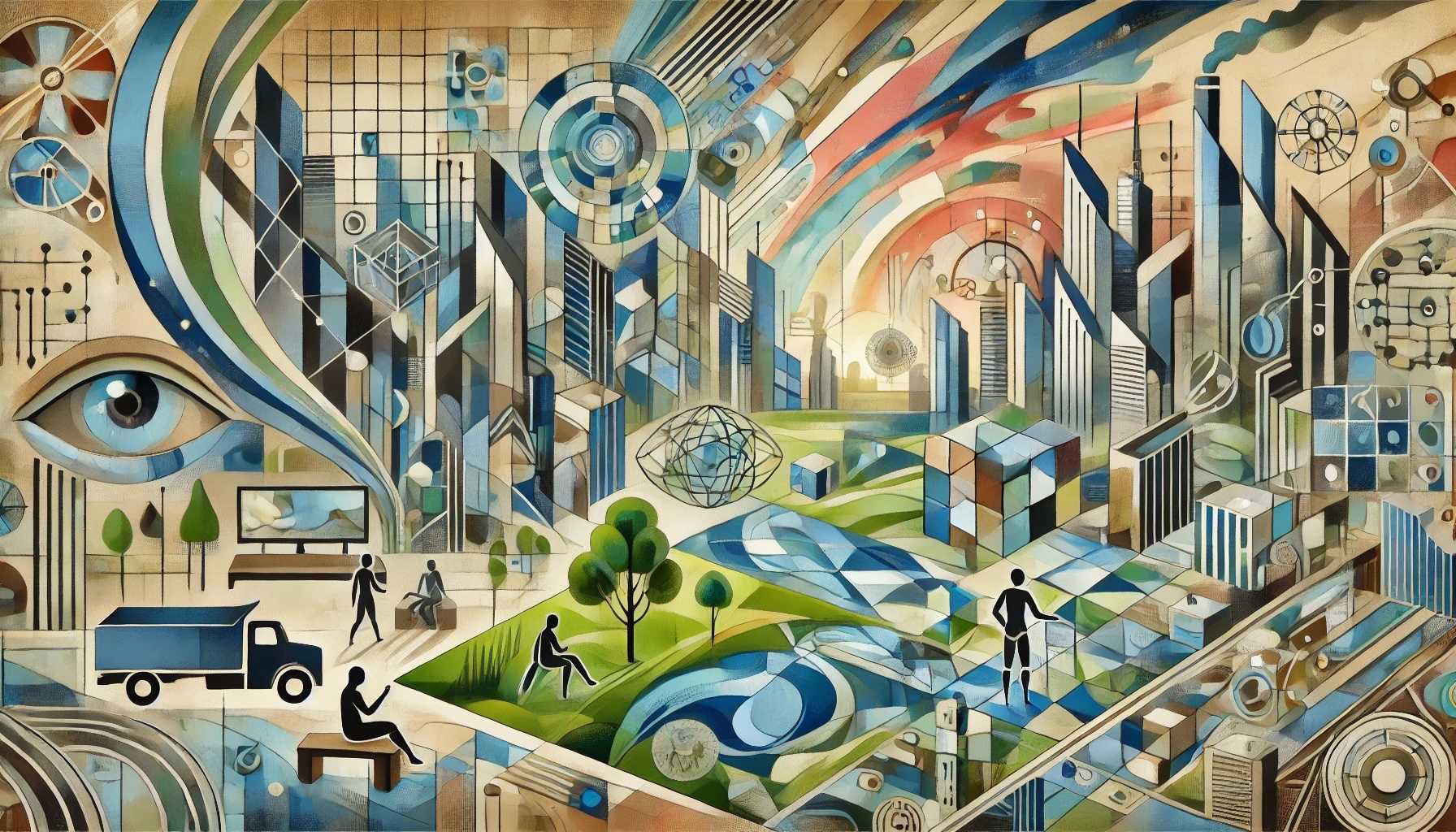
Expansive Views
From living observatories, diverse data.
Over the next decade, the way we see cities will undergo a profound transformation. Driven by the demands of climate adaptation, vast new webs of sensing will expand beyond the built environment to capture the deep and diverse details of urban ecosystems, too. Deployed to feed learning machines with a voracious appetite for data, these systems will join up to constantly monitor the minutiae of urban change. Our cities have always been alive—only now will we see them fully.
Concurrent advances in robotics and data visualization will carry us into the new era of urban omniscience. Digital twins will mature from monitoring tools into platforms for citizen engagement in planning. Autonomous urban robots and drones will do the dangerous and dirty work of inspecting building facades and sewers alike, boosting our ability to measure and maintain climate-stressed structures and infrastructures. And they’ll constantly survey urban wetlands and canopy, quantifying natural capital in real-time and rewriting city dwellers’ relationships with nature. This new vision will reach far beyond city limits, as a proliferating constellation of space-based sensors transcend national boundaries.
Expansive views of urban climate change will deliver us greater capacity to see, but they will also put us in a bind. Unless we face tough questions about data access and governance, power will shift in sudden and often unpredictable ways. And we’ll struggle with decisions over using the data to engineer even more elaborate defenses, or to plan our retreat to safe ground. The way forward will lie in striking a new balance between our growing ability to see and our willingness to accept the troubling truth of what’s revealed.
Trends
Each forecast is built up from a collection of several trends. Think of trends like vectors. They call our attention to a single force acting along a path over time.
